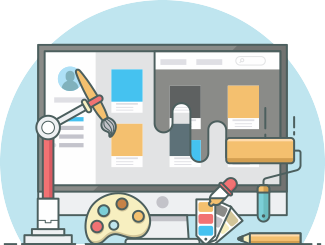
Free Website Redesign Guide:
The Ultimate Guide to Website Redesign for BusinessesSo, you want to redesign your organization's website, and you know you'll need to partner with a great web design agency in order to get that done. But are you ready to make that phone call yet?
This guide will take you through each step of what a successful website redesign process looks like -- from picking the right internal team members and the data you'll need before you get started, to the questions you should ask a prospective web design agency.
Read the full guide below!
Or you can also fill out the form for a downloadable PDF version of the guide you can reference later.
Fill out the form for a downloadable PDF version of the guide you can reference later.
Introduction
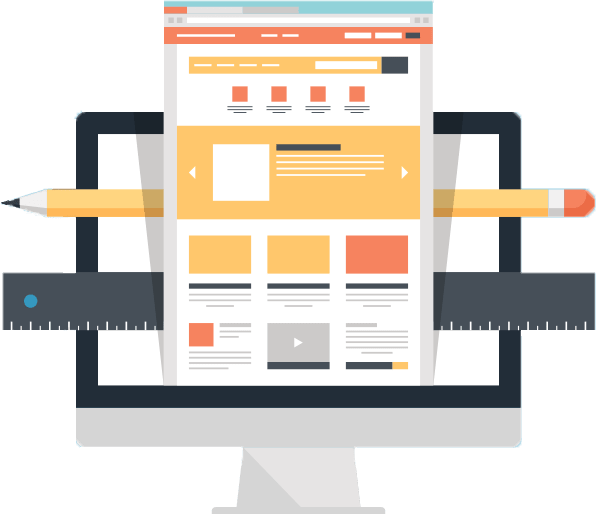
If you’ve decided that your website needs a redesign, there’s usually some sort of obvious symptom or pain point that you’ve identified. After all, people don’t spend the time and money associated with your typical, months-long website redesign project just for the fun of it, right?
Whether the appearance needs a
But before you hire an agency -- even us -- you need to make sure that you’ve covered all your bases and carefully considered what it is that you really need. (That’s what this guide is for!)
Because while there are a lot of good reasons to give your website a makeover, there are also a lot of bad ones, too.
One of the biggest “issues” that people cite with their website is simply, “I don’t like it anymore.”
Designers and developers at agencies are visual problem solvers, so, unfortunately, this kind of “blank check” statement gives them almost nothing to go on.
It’s merely a personal, subjective opinion that you have as someone who likely views the website every single day. But what do your customers think?
As the most important users of your website, are your customers satisfied with what it offers them?
Step Into the Ring:
Another poor reason for a redesign is to keep up with your competitors. Your analytics should be the true judge of how effective your website is.
If you’re redesigning it only because a rival just rolled out their sleek new site, then your goal is really to save face, not to change your lead conversions or update your technology. You can’t be objective, purposeful and strategic when thinking about your own website if you’re only being reactionary to a competitor.
Finally, a significant change to your website, while exciting, doesn’t always necessitate a complete redesign. Adding a feature such as a blog or a membership portal isn’t something that requires a redesign. Neither is getting a new content management system: you can move technologies (e.g. from Joomla to WordPress) without needing to go through the whole three- to six-month process.
Also, a new hire with web design chops will sometimes want to make their mark by suggesting changes to the website, but this shouldn’t always mean a massive new project.
With that out of the way, there are some very good reasons why your website may need a redesign. Here are three of the strongest:
Another good reason is having a new strategy or new business objectives that include clearly defined goals for your website. So if your company is moving in a different direction or introducing a brand new product, it’s worthwhile to consider who your business will be targeting and how your website will contribute to those objectives.
If you still need more inspiration, here are eight of our favorite, oh-so obvious reasons you should redesign your website.
But before you take the leap, there are still three key areas you need to evaluate:
Your website should be first and foremost about your users. It needs to be designed in a way that your users are familiar with: the way they consume media and the way that they’re going to buy your products and services. Everything is about the user, and as soon as you start thinking that way, a lot of decisions about the redesign will be a lot easier to make.
Neither should your website be a sales brochure. It shouldn’t be about directly telling users what you can do. Instead, it should be focused around solving their problems and understanding their journey and what they need.
Once you’ve determined that you’re going into your website redesign project with the correct mindset, it’s time to call up the agency of your dreams and get to work with new designs and fonts, right?
Actually, not so fast. You have a lot to do to prepare for your next website redesign. In fact, before you start looking at agencies, there are still four internal preparation steps you need to go through, and they include:
Step 1:
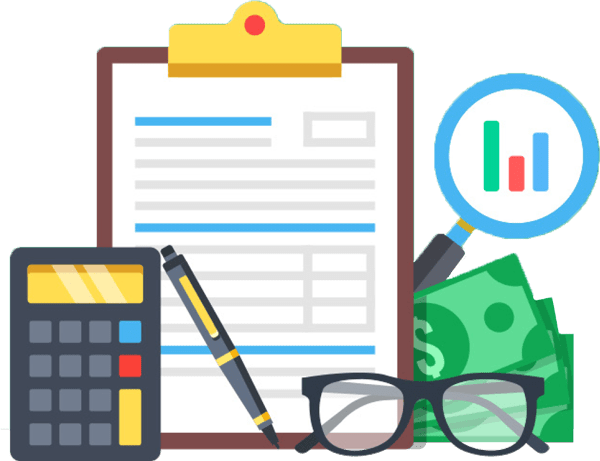
 Just like you can’t go to a steakhouse if you only have $10 in your pocket, you need to have an honest, realistic conversation internally about what you need from your website redesign project, as well as how much you’re willing to invest in it.
Just like you can’t go to a steakhouse if you only have $10 in your pocket, you need to have an honest, realistic conversation internally about what you need from your website redesign project, as well as how much you’re willing to invest in it.
The worst thing you can do is hire a web design agency when you have champagne taste and a beer budget.
Gut Check:
Websites do cost time and money -- especially award-winning websites -- but that fact alone shouldn’t dissuade you.
Your website is the only salesperson that works on your behalf 24/7 - it’s selling, answering questions and making connections even when you’re not. The more time and money you invest in it, the more value you’ll get out of it.
This stage is all about figuring out that sweet spot that balances your objectives, as well as the resources you’re willing to invest, from the standpoint of both cost and effort.
Perhaps the most important question of them all is:
Of course, when it comes to determining how much your website redesign should cost, you need to keep one thing in mind -- if you’re looking for a website that you ultimately can’t afford, you’re setting yourself up for disappointment.
But the answer is different for every company, but here are some of the most important factors to consider:
The other point you need to consider is your potential return on investment with a new website. For example, let's say you invest $25,000 to redesign your company's current website. Depending on the profit margins, you could earn back what you spent designing your new site in just a few sales.
So, take our advice:
Finally, make sure that you leave room in your budget for contingencies.
Sometimes old, forgotten legacy technologies present problems, or a new tool clashes with your company’s intranet. In cases such as these, the agency may need to pull in an outside developer for help, which can break the budgets of those who are unprepared
Just like your budget, you have to consider whether your projected timeline is viable.
 Usually, it takes about one month for agencies and clients to come to an agreement about a website redesign project. This period can be extended if you need to wait for the budget to be approved, or if a key stakeholder is unavailable.
Usually, it takes about one month for agencies and clients to come to an agreement about a website redesign project. This period can be extended if you need to wait for the budget to be approved, or if a key stakeholder is unavailable.
During this time, you should be open and honest with salespeople about your situation -- otherwise, you'll risk your website redesign project going off the rails. A good sales team will put effort into understanding your business, your goals, your competitors and how their agency can fit into the picture.
Realize that your company has a great deal of influence over how long the project will
At a minimum, you can expect to spend two to three hours working on your website every week. The more moving parts and features you introduce, the more complex the logistics will be, and the more time you need until completion.
For example, one page of copywriting generally involves 15 to 20 minutes of speaking with a subject matter expert. If you’re not willing to invest your own time into the project, you’ll need to pay the agency more in order to compensate.
Step 2:

Your website’s hosting and domain name credentials are like the deed to your house: not information you need every day, but vitally important.
Your hosting provider is the one that provides a home for all of your website’s files, and your domain name hosting service is where your website’s domain name (URL) is registered. No matter what agency you choose, they need to be able to point that domain name to where your files are
In many cases, however, your hosting provider and domain name hosting service are separate companies, and you may not even realize it. This is especially true if your organization has multiple departments, and it’s been some time since you’ve looked for that information.
For instance, you may have purchased your domain name on GoDaddy, but host your files on WP Engine. Well, what if you only know about one and not the other? (In our experience, this is not uncommon.)
Our advice is to do the research before you hire an agency, and don’t make a potentially disastrous assumption and tell your agency, “Everything you need is in GoDaddy.” Not only would that be inaccurate, this knowledge gap can lead to serious issues down the
This gives you another decision to make:
There’s no right answer to this question, but it’s one you must answer because it has a big impact on how you will take your new site live for the world to see.
If you have internal IT staff who understand how to edit things like CNAME and MX records (if your IT staff has to ask what these are, that is a red flag), you might not need to give this information to your agency because you can handle a website launch internally.
If you lack this kind of internal expertise, you’ll probably have to share your credentials with the agency you hire, and this means ensuring you trust them to keep this information secure.
By now, you might be saying to yourself: “This sounds like a lot of work that I don’t want to do. I shouldn’t have to think this hard.”
First, if you’re not willing to think about your budget and timeline, then you need to pay an external consultant to do it for you. Their decisions will be made based on their own experience and best practices, not yours.
Second, and more to the point, if you aren’t willing to put in the time and effort to figure this out, then you’re going to be very disappointed with the entire process when you engage with a web design agency. You can’t get what you need if you don’t know how to ask for it in the first place.
Okay, are we good?
Great. Let’s get back to business.
Step 3:

Once you’ve determined your needs, expectations, budget, timeline, and technical constraints, it’s time to make sure that your team is in total alignment. What do we mean by alignment?
The alignment process involves two separate steps:
Before you pick up the phone to call a web design agency, you need to determine the person who will have ultimate approval power and judgment over the entire project. This is typically someone such as a CEO or a marketing director, who will sign off on any major decisions.
The situation you want to avoid is any sort of “design by committee,” in which more than one person has these responsibilities.
While it’s good to have multiple people involved -- we’ll talk more about that in a minute -- having this kind of crowding at the top of the approval chain will prolong your timeline and increase the chance of conflicts. Plus, it puts the burden on the agency to resolve conflicting opinions and ideas, a time-consuming process that you will ultimately pay for.
That’s why selecting a single, final decision-maker is for the benefit of both you and the agency, so that they can have an established point of contact for their questions and concerns, and you’re not paying your agency to play mediator for your team.
Beyond this project leader, you will also need to select a committed team that will be working with and assisting the agency throughout the process. They will be able to provide on-the-spot feedback as important developments occur, rather than involving the entire company or conducting an internal user survey.
They must be willing to contribute to the process by participating in the initial kickoff call and evaluating major milestones, at the very least. They should have different backgrounds and opinions in order to give the best feedback, but not volatile or conflicting personalities that make for a dysfunctional team -- and for awkward arguments in front of your agency of choice.

Employees in client-facing roles can be a great choice for inclusion. Salespeople and members of your customer service department are often more tuned in than anyone else in the company to what your prospects want and

Your marketing team can also be a great

A higher-level executive in the C-suite would be an ideal choice. They may not participate as much in the process, but they can be inserted strategically at various points in order to make sure that the new website is in line with your company’s mission and vision. This is especially important if your redesign is meant to help turn over a new leaf for your company, or is a key part of achieving forward-looking revenue and business goals.

If your business has a large number of subject matter experts, you should definitely include someone who knows your products or services inside and out, and who can assess the quality and accuracy of the content on the new website. This is especially important if you plan to have any sort of copywriting delivered by the agency as part of your redesign.

Employees who have been at your company for a long time are also a good
While it’s important to plan ahead, you don’t need to have a final team in place until you engage with an agency and understand the demands they will ask
Still, you should still have a general idea of the different segments of your business that need to be involved in the project and keep certain people on an unofficial list.
This way when you first start reaching out to agencies, you can point them to specific employees with knowledge of different areas who can answer their questions.
If your project will involve content creation (whether that content be written copy for your website pages, a new explainer video for your homepage, or visuals that help explain what you do), and the agency is responsible for creating the new content, you need to have members of your team ready to take on two tasks:
Contributors need to be available and willing to speak with the agency’s copywriting or content creation team, possibly during multiple interviews. They can range from those who execute the service to those who sell the service -- just make sure to select individuals who can speak to your different business segments with ease.
Also, if this redesign is to be a signal of a new chapter for your company, plan on a C-level executive being involved in some capacity, such as an interview focused on what the road ahead looks like for your organization.
Next, you will need to have an internal set of individuals who will review any new content created by the agency. In our experience, two editors from a client, as well as one point of contact set aside as a final approver, tends to work well. Or you can simply have one point of contact for editorial review on your end.
Again, your agency should be more than willing to work with multiple individuals, but they will need to know who has the final say. Otherwise, you run the risk of creating confusion and missing deadlines.
Be realistic about what you’re looking to get out of a website redesign project, from the content end, and measure that against the level of effort you’re willing to put into it.
Finally, you need to select a point of contact at your company that the agency can consult for the project’s technology needs.
The right person for this job will depend on how robust your company’s IT framework is.
Are you a small startup with five employees and an outsourced IT solution, or do you have a more sophisticated IT environment with thousands of employees across the country?
No matter your internal arrangement, your technology point of contact should be ready and available to answer technical questions from the agency. This person should be prepared for any IT emergencies that might arise during the project and able to be on standby when the website launches.

Step 4:
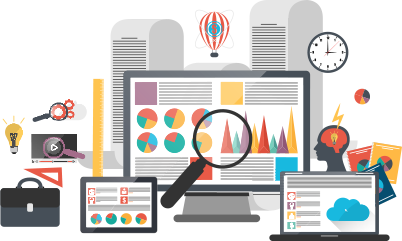
After you have your logistics and project team in place, the last piece of the pie is gathering your benchmark data. Why is benchmarking data important?
When you contact an agency, you’re doing it because you are operating on a certain set of assumptions. Generally, that means you think that your website is broken because of its design, technology, content, or any number of other reasons.
When you collect data about your website ahead of a redesign, the results may validate your assumptions, but they could also
That’s because your users don’t always feel the same pain points that you do, or the things that make you crazy may not bother them in the slightest. In some cases, companies are completely happy with their website design, only to find out that their homepage’s bounce rate was poor.
(Psst! Bounce rate measures the percentage of website visitors who leave - or “bounce” from - your website, after viewing only one page.)
A good website redesign has to be a careful balancing act between making the client happy and staying true to the company brand, while also making website visitors happy and achieving business results such as visitor traffic and lead conversion.
This can be accomplished by listening to the data. When you reach out to web design agencies, you’ll likely be asked a number of questions about your website’s current performance, including:
There are many ways to gain this kind of insight, but four free tools, in particular, are very useful for understanding your website’s performance and your users’ behavior. To use them, all you need to know is how to install a tracking code (or a plugin, if your site is built on WordPress) in order to start collecting data.
Hotjar is a heat-mapping tool that shows where your users are actually clicking on your site and how far down they scroll on each page, across multiple devices. It can even track an individual user’s mouse movements.
You can use this information about how people respond to your website’s page designs to take the subjectivity out of understanding the user’s journey through your website and make data-backed decisions about how the new site will be designed.
For example, you may be assuming that people are scrolling all the way down your page, or that an offer in a prominent location is getting a lot of attention, but the Hotjar data may tell you that your visitors are not even going beyond the hero image on mobile.
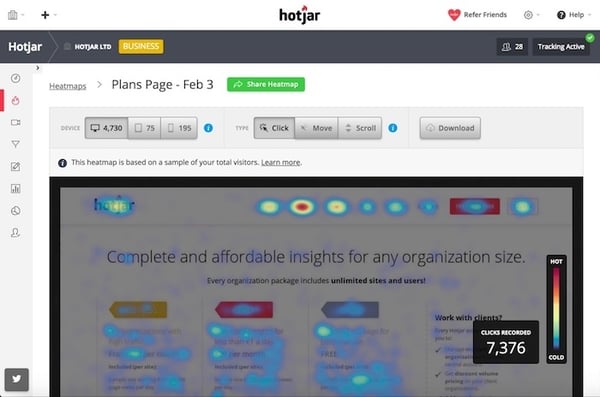
Hotjar provides you with quantitative information, showing a quick visual representation of what actual users are doing on your website.
It won’t give you a ton of numbers, but rather visual cues to help you understand how your website’s design can have an impact on performance. If your website doesn’t have a lot of traffic, this is very powerful information.
You can see what happens on your site without wondering if the numbers that you’re collecting are good news for you.
You might already have Google Analytics installed on your site. If not, you should do so right away,
The good news is that Google Analytics is free and very easy to install.
You’ll need to collect data about how many views each page gets, what the overall traffic to your site is, how users move through your site, and which pages they bounce away from. This information also allows you to see which pages are in most need of a restructure or need to be more closely evaluated.
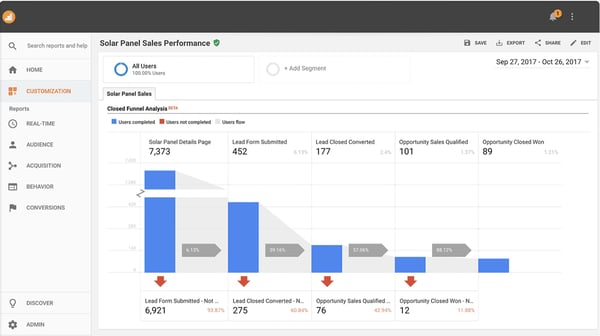
Many companies that we talk with want to rebuild their website with a fresh new look and feel, without necessarily reviewing the site’s content. Google Analytics provides the kind of data that might make you realize that certain pages need an entire overhaul of the on-page content as opposed to simply a new design.
For instance, if a page has a low ranking or barely gets any visitors, is it even necessary to carry over into a redesign? If a page should be very important but it has a high bounce rate, is the content on this page relevant to the user?
Google Search Console is another free and easy-to-use tool that identifies broken links and lets you see how your pages rank in Google searches.
Manually repairing broken links as part of a website redesign can take a long time, so the information available in Google Search Console is vital for any agency to be able to accurately estimate what will be required to repair these issues and thus provide you an accurate budget and project schedule.
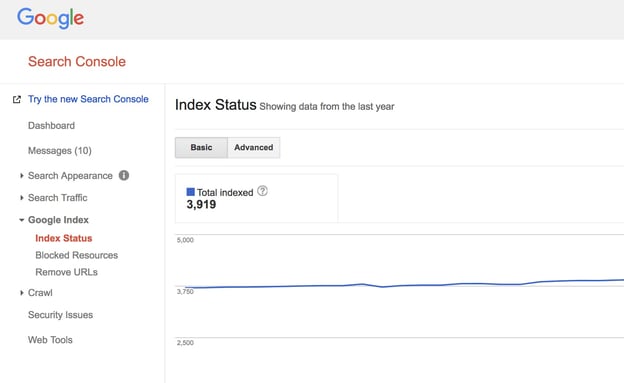
If you have a very old website, some of your links may have broken over time as you’ve shifted things around. Higher-end web design agencies know to check for issues like
HubSpot Marketing Free (formerly called
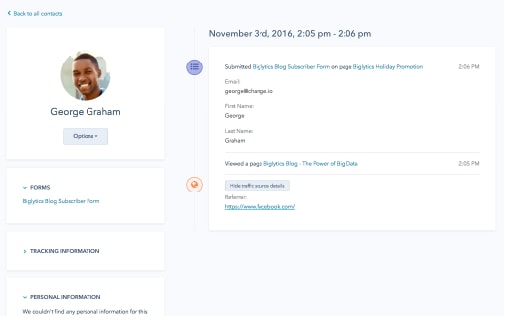
It gives you a clear picture of the buyer’s journey and shows you where there are specific gaps, if any, in the process as it relates to your website.
This is great data to have in advance of a site
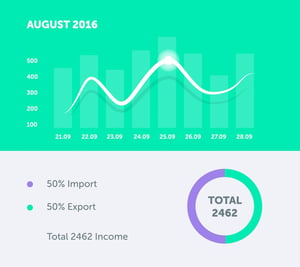
These tools need to be put in place on your website as soon as possible -- at least 30 days before contacting agencies, but ideally six months in advance. The more data you have when speaking with agencies, the better.
This being said, don’t feel like you can’t engage with anagency if you don’t have these tools installed, but understand the risks involved if you do begin a website redesign project without adequate benchmarking data.
If you begin the redesign process without that 30 days worth of data, you’re going to be working under a lot of assumptions that you can’t prove until you’ve
Step 5:
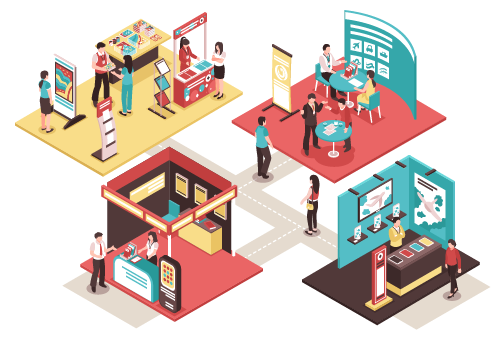
Unless you have a fully functional website redesign team (including a developer, front-end designer, copywriters, SEO expert, user experience expert, marketing strategist, etc.) in-house, you’re going to need to hire an agency to complete your project.
(That's probably why you're reading this guide in the first place!)
Picking the best agency is about more than just having the right price tag, or being right down the street from your offices. Website design agencies come in many different shapes and sizes, with goals that are best suited for different kinds of customers.
Usually located in a giant metropolis like New York or Los Angeles, your traditional ad agencies are the big dog-eat-dog firms that you see in the movies, with perks like ball pits and massages and rooms where you do “creative thinking.” Advertising agencies are often intensely focused on Fortune 500 companies and big branding schemes.
Websites are part of what they do but, more than anything else, they concentrate on brandrepresentation.
An ad agency might be right for you if you’re a large, publicly-traded traded company, or if you have a global brand whose reputation is worth a lot to your company. They tend to be substantially more expensive than the other options, but are worth the price if you have a lot of money to spend on messaging and branding.

Agencies in this area concentrate on building e-commerce
Typically, they specialize in a particular content management system, like Magento or Shopify, that helps users set up their own e-commerce platform and can handle secured payment transactions.
If this is the right type of agency for your business, you’ll likely already know it, since e-commerce companies require a particular skill set. Developing an e-commerce website requires knowledge of a lot of different specialties, such as security and payments or abandoned shopping cart nurturing, that need to be pulled off without a hitch.
Marketing agencies can come in various forms. They may do work in inbound marketing, outbound marketing, or even traditional public relations. If you’re looking to work with a marketing agency, you need to be aware of the differences here, because they’ll all come to the table with different specialties and solutions to address your pain points.
What these marketing agencies have in common is typically a focus on strategy before design. IMPACT, for example, is a full-funnel marketing and sales agency, with a strong focus on inbound marketing for B2B (business-to-business) organizations.
That means that the focus is on the content and the user, from the moment they land on your website, through to the close of a deal. To us, the entire purpose of your website should be to answer customers’ questions and aid them throughout the buyers’ journey. This is often referred to as conversion rate optimization (CRO).
Additionally, they may have experience with other CMS platforms -- like the HubSpot Website Platform -- that you may want to consider at this point as an alternative to the ubiquitous WordPress or WIX.
In fact, there has been a lot of conversation in the industry around which CMS is better for B2B websites, HubSpot or Wordpress. So, if you've been building on WordPress for awhile now, you may want to engage an agency of this kind, who will have the industry expertise to challenge the status quo of your website build.
(Especially if you're considering getting into bed with a marketing automation platform -- like HubSpot Marketing -- since having your site and your marketing automation in one place can be a game-changer.)
Other marketing agencies essentially do the job of a big advertising agency on a smaller scale. Some focus on outbound marketing efforts, such as magazine and radio ads, with a little bit of traditional public relations mixed in, while others are very design-driven. They might be the right choice if what you’re looking for is a site that reflects cutting-edge visual design trends rather than conversion optimization.
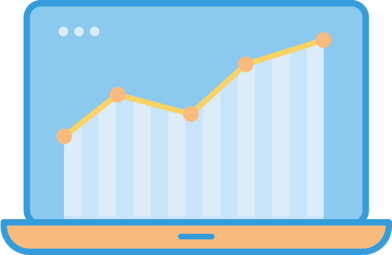
If you already have lots of informative content explaining how a user can solve a problem, and if you’re more focused on helping the customer make the right decision and less on your company pitch, an inbound marketing agency vs. a traditional web design agency will be a great fit for you.
That said, you’ll be making a poor choice if your only focus is to build awareness and need a flashy website with all the bells and whistles.
Website design agencies are just what they sound like - agencies that specialize in website design and nothing else. They build lots of sites for lots of different types of companies in lots of different industries, and they have highly-skilled teams that can handle technically-complex challenges with ease.
If you’re looking to build a site with custom modules such as real-time data visualization or interactive elements, a website design agency could be the right choice as they will most likely have an in-house team of developers and programmers capable of bringing your vision to life. A web design agency might also be a good choice if your website project is very simple and doesn’t require a lot of
On the other hand, if you want your website to fulfill a larger business purpose and drive leads for your company, it might make more sense to go with a marketing agency rather than a website design agency.
Marketing agencies will see your site as one piece of a much larger puzzle and will ensure that the site you build supports the other elements of your business plan and marketing strategy.
If you’re totally lost, do this first: Figure out whether your company is primarily B2B, B2C, or e-commerce of any variety. This will affect how you approach your website and how users interact with it. If you don’t know your own goals, you won’t be able to appreciate how a website is supposed to help you with them.
Next, take stock of the various skill sets you might need. Who do you have internally on your team, and where are the gaps? Do you need content writers, developers, or someone with design sense? The agency you work with should be able to fill these vacancies with skilled members of their own staff.
Finally, beware of ye olde shiny penny syndrome.
Don’t make your decision based on how pretty an agency’s portfolio is. This is especially true when looking at inbound marketing agencies. Their websites might not be the most attractive on the block, but that shouldn’t be your primary goal: You want website visitors to convert into leads and be nurtured into becoming customers.
A snazzy website which does lots of fancy tricks built by an ad agency might not make sense if your goal is to get your visitors to fill out a form and provide you with their email address or phone number.
As previously discussed, before you talk to an agency, you need to have some sense of your budget. However, you should expect to have some flexibility on this during the negotiation process, especially if your project will require additional support in the form of copywriting or developers to code specialized features.
When talking about how much things will cost, don’t worry about nickels and dimes. You shouldn’t be at the point where you’re considering removing a few pages from your site just to cut
Think about your website budget not just in terms of the cost per page or per word, but also in terms of what it brings you: communication with the agency, creativity, strategy, branding, and keyword research. The benefits that these can generate -- and the potential customers that they can bring in -- are worth far more than the few hundred dollars you might be able to save by trimming a handful of pages.
Now that you have an idea of what type of agency you would like to work with, you still have more research to do before selecting your top pick(s).
By researching different agencies and looking at their websites, you can pick up on some indicators that are either green lights or red flags to help you whittle down the potential agencies to do your redesign. In fact, we’d say all of the below factors are ones that you should be able to access online, through your own research, without having to pick up the phone to ask.
Ultimately, the goal of this independent research phase is to land on two to four agencies you’d like to speak with further about your redesign project.
The first factor is something that’s a deal breaker for some people: location. If working with a local agency is important to you, that should be the very first thing you use as a qualifier.
Of course, now that teleworking, screen-sharing technology and video chatting are ubiquitous, it’s certainly not important to everybody - but still, you should talk it over with your team before you contact agencies. That may not be the way they prefer to work or collaborate.
Next, you should check the makeup of the company’s staff by reading its About page. How many are core members of the team versus freelancers? What kind of experience and educational background do they possess?
Also, examine the diversity of skills that the team members have. You don’t necessarily want to work with an agency filled with generalists.
For example, if a team has four people on it, and asingle person is

When you make a purchase online, you probably look at ratings and reviews to see what other people think of the product. Website testimonials and case studies are the two most common ways that agencies show off their results.
Testimonials are important because you want to make sure that this isn’t the agency’s first rodeo. Usually, a testimonial will provide the person’s name, company, and role, which enables you to see whether that website is still up-to-date and functioning properly.
This can be a bit tricky to evaluate in some
In addition to reviewing testimonials, you can - and should - ask the agency for references. This is a great way to dig deeper and find out not just what the sites they’ve designed look like, but what it is like to work with their team:
These are all important questions that you can get answered by checking references.
Just like the
Did they want lots of flashy graphics or a rise in their conversion rate? And was the website built by the agency able to deliver on those expectations?
IMPACT Client Success Story:
The absence of testimonials and case studies should be viewed as a little suspicious, as it can imply that either the agency hasn’t done enough work, or worse, they can’t find anyone willing to vouch for them on the work they have done.
In this case, if you are still interested in working with them, we absolutely recommend that you call the agency and ask for references.
It’s always a risk and a leap of faith when you reach out to a new partner, and agencies know that they need to demonstrate their capabilities to their clients. So if they’re not able to provide this kind of validation of their work, that may be the sign of a larger problem.
Portfolios are work samples that let you know that the agency is in line with your aesthetic. Meaning if you have a dog grooming business, an agency that usually works with technology startups might not have the right look and feel for you. That’s why it’s wise to review an agency’s body of work to make sure it matches the aesthetic you have envisioned.
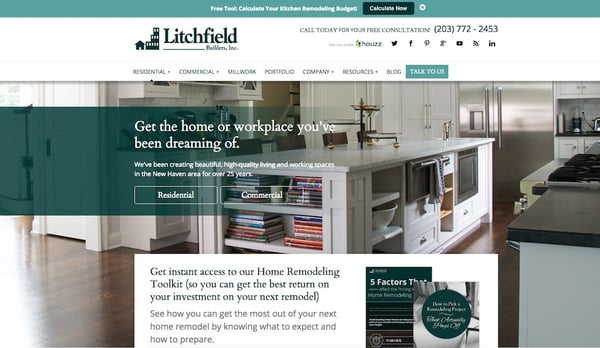
IMPACT Client Success Story:
Although it’s true that websites are starting to resemble each other more and more, there’s a difference between a similar user interface pattern being seen all across the web and a particular agency using a single aesthetic as a crutch. If it’s the latter, the company is taking a cookie cutter approach to design, rather than purposefully toward the needs of the client.
An agency’s price proposal needs to be just as acceptable as its team, its results, and its aesthetic. At this point, you should be conscious of the fact that you can’t get a champagne website on a beer (or water) budget.
You should be able to get at least a ballpark number from an agency without having to ask for a
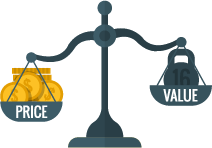
Most agencies will run a comprehensive discovery process lasting between 30 and 45 days, and you’ll need to get a lot of things in order for several agencies while you’re vetting them. So if one of them ends up giving you a dollar figure way out of range, that’s a waste of time.
Providing price estimates is also a good sign of a healthy agency. It gives you a sense that they know themselves well, they’re competent, and they’re aware of how much effort they need to put into a project.
Now that you have your agency candidates in mind, it’s time to begin having those initial conversations that will help you make the best choice for your project.
Depending on your business and industry experience, your company will obviously need its own list of specialized questions for prospective agencies. However, regardless of who you are, you should also go through some standard, yet important, questions which may be less obvious right off the bat.
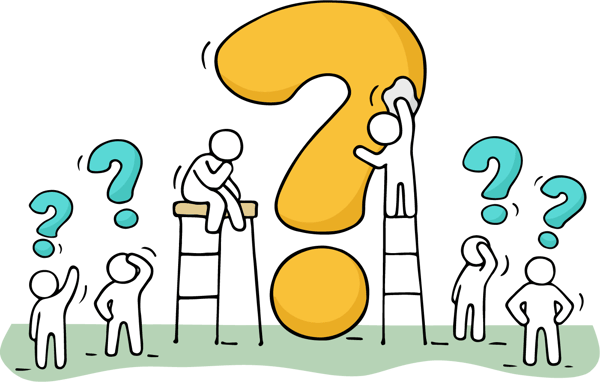
It should be an automatic demerit in the back of your head if they can’t provide answers to all of these inquiries. And the answers agencies provide
Sometimes it can be difficult to figure out which agency to work with, and sometimes it’s clear as day. Based on our experience, here are seven major warning bells that should cause you to go running in the opposite direction.
As we said earlier, an agency may not email their entire process to you because it’s proprietary information, but they should be able to explain it to you. They can either do this on the spot, of they should be able to quickly set-up another call with a subject matter expert or project manager. Additionally, they can email it to you right after you request it.
If neither of these is the case, then they didn’t have one in place or they’re writing it down for you after you asked for it - neither of which is a good sign.
You most likely want to avoid an agency that outsources all of the work to other people and only puts a rubber stamp on it at the end. It’s important to find out not only the percentage of work that will be
For example, if you know that your website will require some heavy-lifting in terms of back-end development, make sure that it gets done in-house and is not outsourced to another company or professional. Websites that need any sort of specialized knowledge or technology require working with an agency that directly employs people with the necessary skill set.
Obviously, it’s not a bad thing to have a large team. It’s a combination of a large agency team and no project manager at the helm that can cause problems.
You need to have one primary point of contact to make sure that you don’t have to memorize the contact information for all of the team members. This project manager will be responsible for fielding your calls and emails and for passing on your messages to the right person.
Unless you don’t care about how many people use your website and how successful it is at driving leads for your business, omitting research and strategy is a fatal flaw.
While everyone likes beautiful, clean, well-designed websites, there needs to be some thought put into why the design looks the way it does. Otherwise, you’re just putting pretty pictures and fonts on a website based on your own whims and assumptions, without any reasoning to back it up.
This red flag is only applicable if you’re making any changes or additions to your website’s content. If the agency will be touching your copy to any degree -- even if it’s just minor copy edits, tweaking, or updating -- and you don’t have a style guide of your own, the agency should be able to help you develop a style guide or have one of their own, that they use as a standard.
Proceeding without a content style guide should be a
This one depends on the complexity of your demands regarding your website content. The more that you ask the agency to do -- whether it’s updating your old content or burning everything to the ground and starting over -- the more time their team will need to spend with you. It’s absolutely crucial that you are the ultimate expert on your own business, and that you have the final say.
For instance, an agency can’t extrapolate technical expertise that they don’t possess out of thin air, but they can engage with a subject matter expert to get the raw material they need. So, if an agency doesn’t have a process in place to address those gaps in their knowledge, that should be a red flag. It’s an even bigger one if the agency feels that they don’t need to talk to you at all in order to write the website copy.
These two buzzwords seem similar but refer to quite different concepts. A mobile-friendly website often does not have the same features and functionalities for both desktop and mobile users.
This often means limiting the use of factors that can be complicated to use on a mobile device, such as

A responsive website, however, is one that dynamically changes based on the user’s device and provides a consistent user experience across different screen sizes.
Responsive websites provide a single backend update that is compatible across all devices and allows for the entire contents of a website to be available on any device. The advantage of building a responsive, rather than mobile-friendly, site is that you can make a single update or change to the site and it will show up whether the visitor is on mobile or a desktop device. As a result, you only have to maintain one website.
Google’s algorithm boosts websites that are mobile-friendly, but at this point doesn’t give extra kudos for responsive websites. However, for the benefit of your users, your website should be responsive and not just have a separate site for mobile devices.
Make sure that the agency knows the difference and that they’re pitching you a website that adheres to responsive web design best practices. Websites that are mobile-friendly but not responsive are antiquated and can cause problems for upkeep when you have to change information in two different places.

Okay, let’s acknowledge the elephant in the room. We’ve outlined an exhaustive to-do list for
While it’s true that redesigning a website can involve a lot of work, the right preparation can save you time, help to clarify the project, break it down into a series of manageable steps and result in better outcomes once your site launches.
Choosing the right agency to work with can also help to turn a seemingly overwhelming website redesign project into a manageable task.
But why has the process become so much more involved?
Over the last few years, websites have become more complex as the roles they play have evolved.
Customers today have high expectations of business websites. No longer satisfied with basic information, they expect regular updates with new information, interactive features that allow them to learn about your company and the products or services it offers, as well as multiple ways to get in touch with you.
As a result of these increased expectations, the process of website redesign has also become more involved. When you are considering which agency to work with on your site redesign, you’ll need to find out as much as you can about their process. (Remember to review the list of questions given in this guide to help you figure out whether the agency is the right fit for your brand.)
So, when you’re working on a website redesign project, as with so many other things in life, you get out of it what you put into it.
In the context of your website, if you’re willing to put the time and resources into researching your customer demographics, learning about how they use your site and coming up with a design that can meet all their needs, you can create a website that performs to your expectations and contributes to the growth of your business.
Learn how we can help you reach your goals -- and to see if we're the right fit for you.
Talk to us